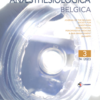Assessing fluid shifts in the pediatric surgical patient: is bioimpedance a promising tool
Electric Impedance, Body Composition, Anesthesia, Pediatrics, perioperative care
Published online: Sep 20 2023
Abstract
Background: assessing the fluid status of pediatric surgical patients is still a difficult task
Objectives: assessing fluid shifts pre- and postoperatively in pediatric patients undergoing general anesthesia using bioimpedance spectrometry (BIS) and assessing BIS in practice as a tool for fluid research in the anesthetic setting.
Design: single center prospective pilot study
Method: we included pediatric surgical patients age 2-16 yrs, the Total Body Water (TBW) was measured using the Body Composition Monitor (BCM, Fresenius Kabi) pre- and postoperatively. anesthetic management was otherwise routine. All patients were fasted following the ESA Guidelines (2011) and were allowed to have oral intake postoperatively. IV Fluid maintenance rate was calculated by the “4/2/1”rule (Holiday and Segar), fluid boluses were given when necessary. A fluid balance was calculated for each patient.
Results: 88 patients were screened, 28 included. 71% where male, median age (y) was 6 (IQR 3). 71% were in ambulatory setting. Median total fluid balance (ml/kg) was 27.3 (IQR 14), non-normally distributed. Mean TBW preop was 14.9 (95% CI:13.3;16.4) L and mean TBW postop was 14.4 (95% Ci: 12.8;15.9) L . the difference in TBW pre- and postop was non-significant (paired T test; 95% CI. p=0, 93; -0.33,1.36). There was no correlation between Total fluid balance and the TBW difference using Pearson correlation test (P= 0.32, 95% CI (-0.19, 0.52)).
Discussion: the BCM was not usable in the operating theatre due to electronic interference, limiting it’s perioperative usage. It is however easy and comfortable to use in pediatric patients on the ward. Sample size was smaller than anticipated limiting the power of the study. Most surgeries were performed in ambulatory setting with limited blood loss, short IV running time and no fluid resuscitation resulting in no significant difference in TBW pre- and postoperatively.
Conclusion: the BCM is not usable in the OR environment, but further research in more fluid demanding surgeries are needed.
